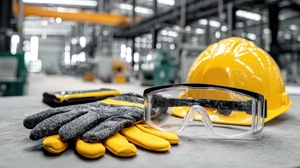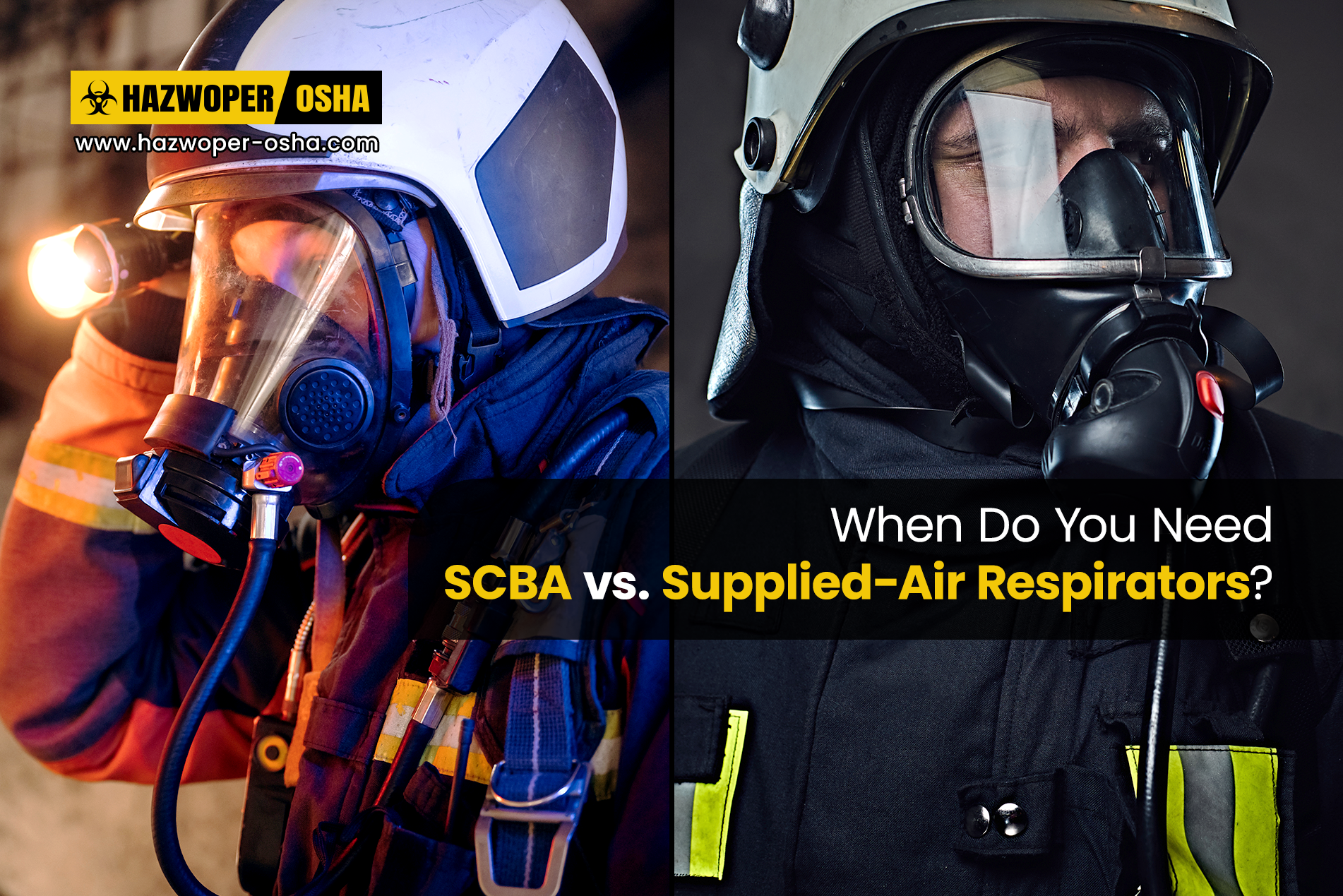Why Industrial Hygiene Should Be a Priority in Every Workplace?
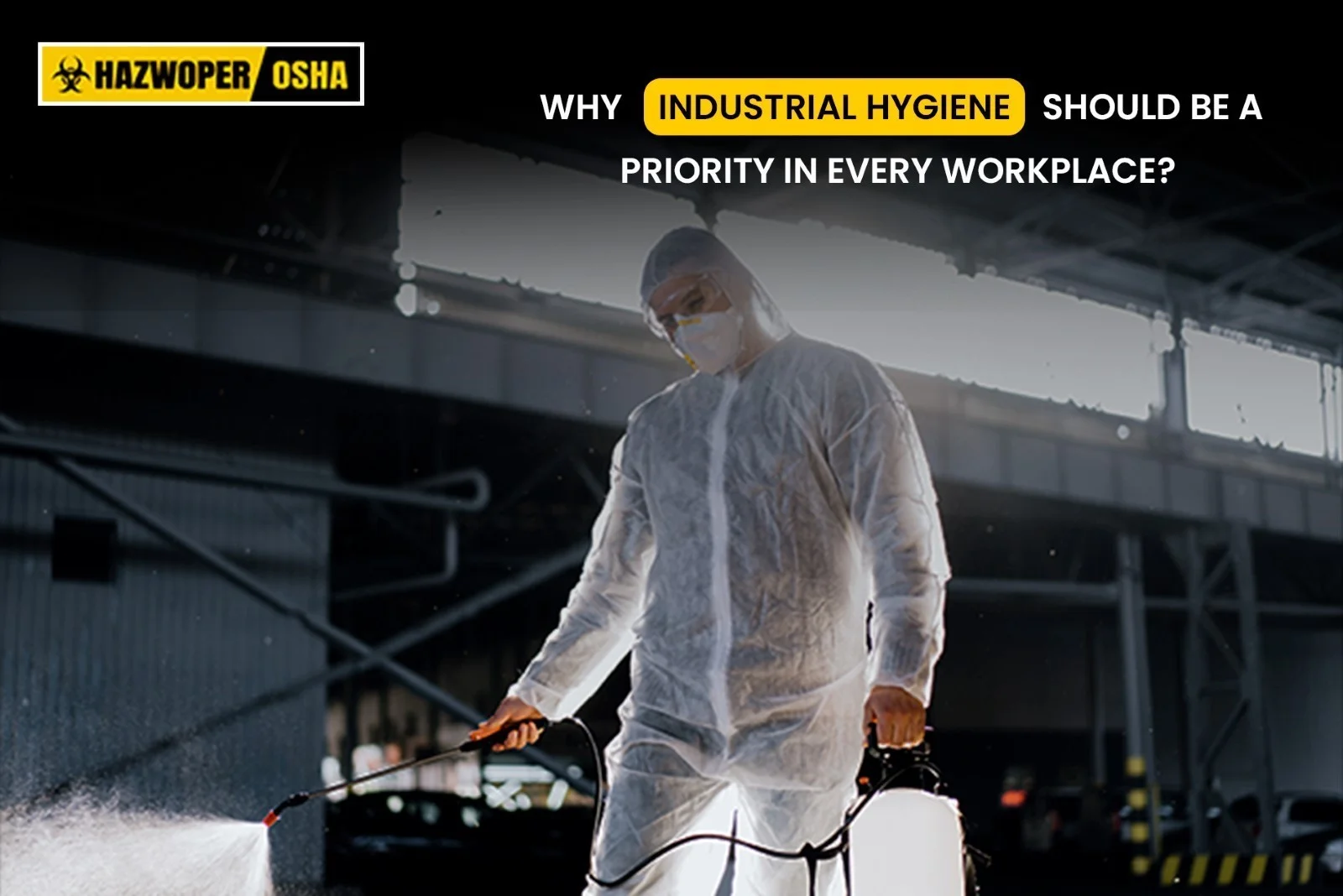
Introduction:
In workplaces, the importance of industrial hygiene is non-negotiable. Occupational diseases are the cause of 2 million deaths annually, emphasizing the need for stringent measures to keep employees healthy in the workplace. Industrial hygiene refers to the strategy that identifies, evaluates, and diminishes environmental hazards, including chemical exposure, ergonomics risks, and other risks that can cause serious health issues. By implementing industrial hygiene practices, the organizations not only strengthen their safety practices but also fulfill their legal obligations and boost employee morale.
Common Workplace Hazards That Industrial Hygiene Addresses
To create a safe and healthy workplace, the employer should understand and implement the core elements of industrial hygiene. The core elements of industrial hygiene help identify and reduce the risks that cause serious health issues for the employee. Let's understand the core components of industrial hygiene.
Chemical Hazards:
Chemical hazards are the substances that cause harm to human health through inhalation, skin contact, or ingestion. Common examples of chemical hazards include:
-Vapors and Gases: These include carbon monoxide and volatile compounds (VOCs).
-Dust and Fumes: Grinding and welding-like processes generate fumes and dust.
-Mist and Aerosols: These come from spray applications.
Being exposed to chemical hazards can lead to long-term effects on respiratory health if not addressed properly.
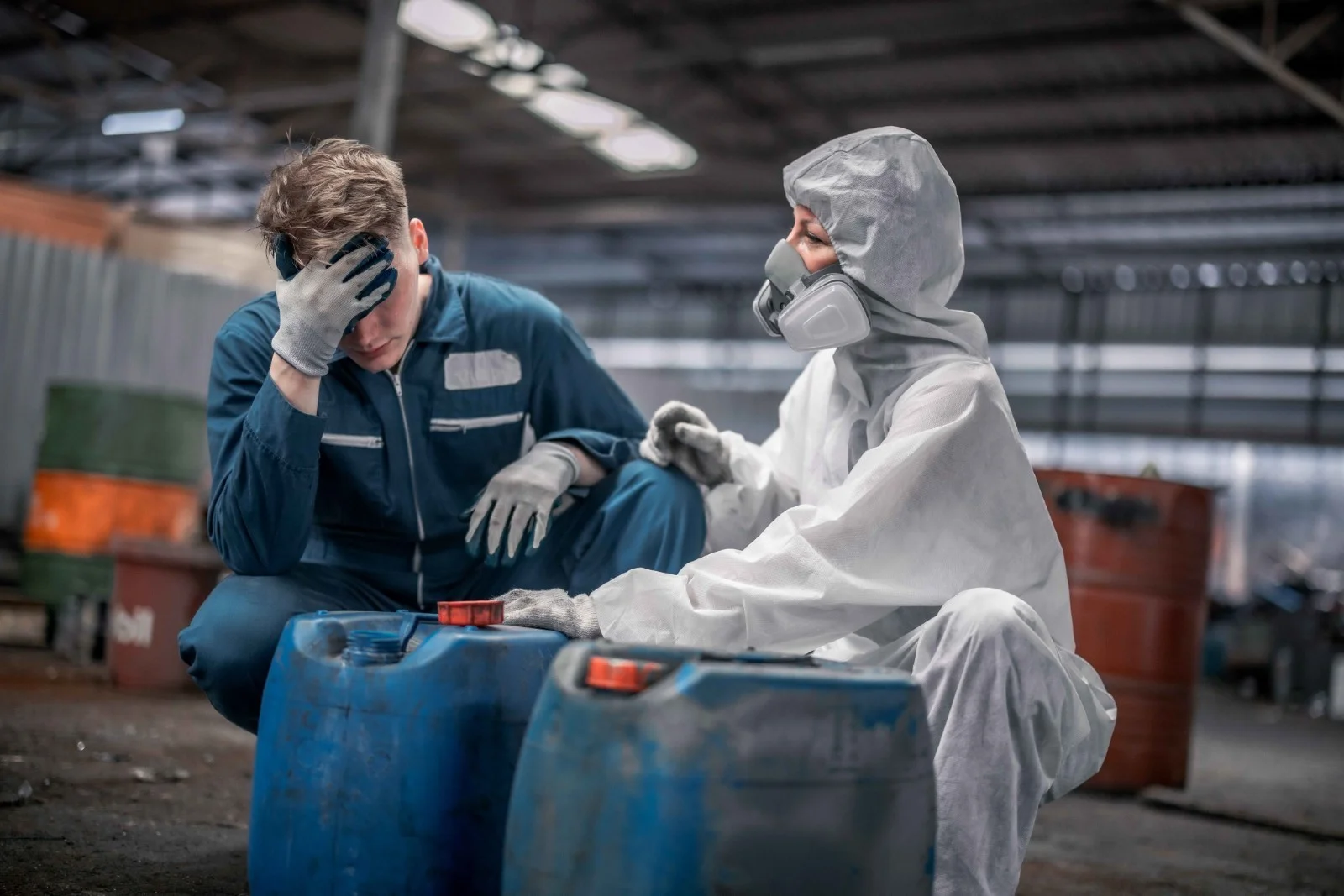
Physical Hazards:
These environmental factors are harmful to humans without directly contacting human skin. Examples of physical hazards include:
-Noise: Leads to hearing loss if exposed for a long time.
-Temperature Extremes: Both heat and cold exposure lead to severe health issues.
-Vibration: Long-term exposure can cause conditions like Hand-Arm Vibration Syndrome (HAVS).
Biological Hazards:
Microbes and living organisms in the workplace can cause serious infections. These cover:
-Viruses and Bacteria: Can be found in workplaces or healthcare sites.
-Fungi and Molds: Causes respiratory issues, as they multiply in damp environments. To make your workplace mold-free, enroll in our comprehensive suite of Mold Inspector Certification for Prevention, Remediation, and Removal Training and Mold Prevention and Remediation Awareness Training.
-Bloodborne Pathogens: Are mostly prevalent in the medical and sanitation fields. To gain the basic understanding of blood borne pathogens, their transmission and prevention enroll in our course today!
Ergonomic Hazards:
Workplaces with weird designs and tasks that require weird postures are the major factor leading to musculoskeletal disorders (MSDs). Their types are the following:
-Awkward postures: Muscles can get strained by reaching or twisting.
-Repetitive Movements: Typing and assembly line work.
-Forceful Exertions: Not using proper lifting techniques to lift objects.
Addressing all of these core industrial hygiene elements and biological, chemical, physical, and ergonomic hazards helps workplaces develop an in-depth industrial hygiene program. This helps to keep employees safe and develop a reliable safety culture.
For an in-depth understanding of workplace hazards and their types, please read our blog on The 6 Categories of Workplace Hazards.
The Core Elements of an Industrial Hygiene Program
Industrial hygiene's core elements help workplaces to become healthier and safer. With these elements, organizations can evaluate, identify, and control workplace hazards that can lead to health issues. The five key elements of industrial hygiene include:
Anticipation:
Anticipation helps to predict potential hazards before they turn into a disaster. For anticipation, one needs to have a comprehensive understanding of the workplace environment, such as:
-Work Processes: Identifying the possible hazards in tasks by analyzing them beforehand.
-Material Used: Inspecting the chemical inventories and their safety data sheets to anticipate the risks.
-Workforce Dynamics: Evaluating the various roles that are exposed to different risks.
By foreseeing the hazards, organizations can design safety measures to avoid accidents.
Recognition:
To identify existing workplace hazards, the following steps are taken for recognition:
-Performing In-depth Inspections: Assessing work environments regularly to detect possible hazards.
-Employee Feedback: Training employees to report hazards and unsafe practices in the workplace that they may encounter.
-Analyzing Data: Assessing past incidents and near misses to spot a pattern that suggests the hazards.
Risks can be mitigated promptly by effective recognition.
Evaluation:
After recognizing the hazards, the next step is to assess the extent of exposure and risks related to these hazards. Steps of Evalution include:
-Tracking Exposure Levels: Using techniques and tools to calculate employees' exposure to hazardous substances or conditions.
-Risk Assessment: Using the exposure data to understand the likelihood and severity of health effects due to the different hazards.
-Documentation: Record the evaluations to track the changes over time.
This assessment prioritizes the most dangerous hazards that need to be mitigated immediately.
Control:
Control measures are implemented to minimize or eliminate exposure to hazards. These include:
-Engineering controls: Include equipment modification or risk reduction methods such as setting up ventilation systems.
-Administrative Controls: Modifying work practices or policies, such as rotating job assignments.
-Personal Protective Equipment (PPE): Using safety gear in case the other controls are deficient.
Combining these strategies will help to develop a safer work environment.
Confirmation:
The final strategy includes making sure that the control measures are effective to minimize exposure and mitigate health issues. It covers:
-Routine audits: Performing follow-up assessments to ensure compliance with the safety measures.
-Feedback Loops: Taking in employee feedback regarding the effectiveness of the implemented controls.
-Ongoing Improvements: Using the new information to adjust the strategies or change the workplace conditions.
All of above discussed points ensure that every workplace has a robust industrial hygiene program that supports the worker's health and safety.
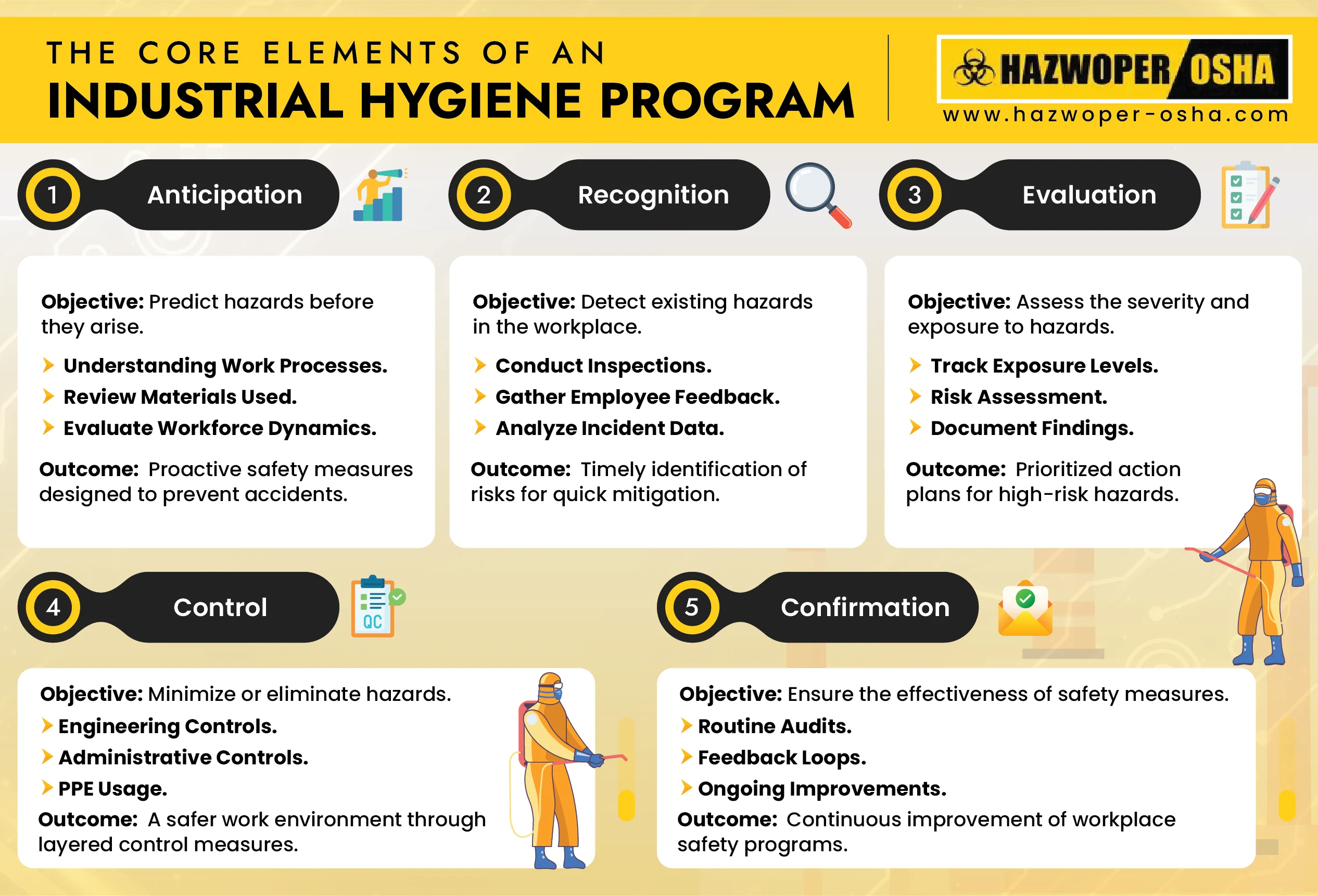
The Hidden Costs of Neglecting Industrial Hygiene
Neglecting industrial hygiene is one of the costly blunders that an organization can make. Following is some of the major consequences of not following the practices of industrial hygiene:
1. Employee Health and Safety Impact:
Poor hygiene practices are one of the significant causes of health issues at the workplace, causing 4 billion lost workdays per year and an additional $530 billion in revenue. What's even more concerning is that 320,000 workers lose their lives every year due to exposure to workplace hazards, raising healthcare costs for employers.
2. Declined Productivity and Increased Absenteeism:
Another unwanted gift of unhealthy environments is workers getting fatigued, suffering from chronic pain and stress, and decreased employee morale. This whole cycle is the main cause of burnout and declined morale.
3. Legal and Financial Repercussions:
Fines, lawsuits, and penalties are other consequences of being non-compliant with health and safety regulations. Workplace accidents contribute to almost $1 billion/week in workers' compensation costs.
This sums up that neglecting industrial hygiene has widespread ill effects on the workplace, employee productivity, and overall costs.
Conclusion:
Industrial hygiene is not just a set of rules but the fundamental basis of developing a safe and productive workplace. Industrial hygiene is a comprehensive plan to reduce costly accidents and health issues and cut down absenteeism and multifold productivity. So, regardless of whether industrial hygiene is ensured through regular training, compliance with safety standards, or routine assessments, implementing industrial hygiene today at your workplace will serve results in the long run. In the end, a healthy workforce is a happy workforce.
References:
Chemscape, July 28, 2021, The 5 Principles of Industrial Hygiene, https://www.chemscape.com/blog/industrial-hygiene-principles
Avetta, Industrial Hygiene Statistics [Statistics & Core Components], https://www.avetta.com/blog/industrial-hygiene-statistics-statistics-core-components

 EN |
EN |  ES
ES












